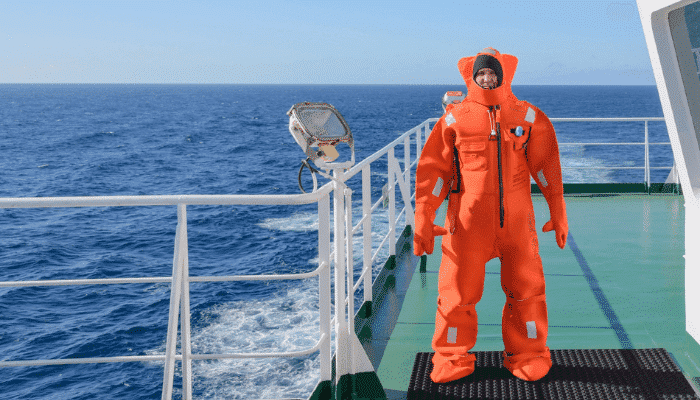A PPE suit is a full-body garment designed to protect the wearer from exposure to hazardous materials, environments, or substances.
From healthcare to construction, marine operations to chemical handling, PPE suits serve as a critical barrier between people and danger.
With workplace safety becoming a top priority in many industries, understanding the different types, levels, and requirements of PPE suits is essential.
What Are the 8 Types of PPE?
To ensure safety across diverse industries, PPE is categorized into eight primary types. Each addresses a specific aspect of bodily protection:
- Head Protection: Helmets, hard hats
- Eye Protection: Safety goggles, face shields
- Hearing Protection: Earplugs, earmuffs
- Respiratory Protection: Masks, respirators
- Hand Protection: Gloves for chemical, thermal, or cut hazards
- Body Protection: Protective suits, vests, aprons
- Foot Protection: Steel-toe boots, anti-slip footwear
- Fall Protection: Harnesses, lifelines
Among these, the PPE suit falls under body protection, but it often integrates respiratory, hand, and head protection depending on its design and purpose.
PPE Suit Levels: From Minimal to Maximum Protection

PPE suits are classified into four levels (A to D) based on the degree of protection they offer. This system helps organizations choose the right suit for specific hazards.
- Level A: Maximum skin and respiratory protection. Fully encapsulated suit with self-contained breathing apparatus (SCBA). Used in highly toxic environments.
- Level B: High respiratory protection, lower skin protection. SCBA and chemical-resistant suit.
- Level C: Air-purifying respirator and splash-protective suit. Used when contaminants are known and measured.
- Level D: Basic protection. Typically coveralls without respiratory protection. Used in low-risk environments.
Choosing the correct level is essential. Overprotection can lead to discomfort and decreased efficiency, while underprotection can result in serious injury or death.
PPE Suit Marine Requirements
Marine environments pose unique risks including saltwater corrosion, exposure to oil or hazardous chemicals, and extreme weather.
PPE suit marine requirements are shaped by maritime safety regulations such as SOLAS (Safety of Life at Sea) and OSHA standards for offshore platforms.
Key marine PPE suit requirements include:
- Resistance to water and salt exposure
- Flame retardancy
- Buoyancy for emergency situations
- Visibility features such as reflective strips
- Compatibility with life jackets and survival gear
Suits must also support movement in confined shipboard spaces without compromising protection. Proper certification and testing are essential to ensure compliance with marine safety standards.
Finding the Right PPE Suit Supplier
When sourcing PPE suits, the supplier’s reliability, certification standards, and industry experience matter just as much as the product itself. A reputable PPE suit supplier should provide:
- Certified suits that meet industry standards (ISO, EN, OSHA, etc.)
- Transparent material specifications
- Options tailored to various sectors (healthcare, marine, industrial, chemical)
- Responsive customer service and technical support
- Competitive pricing without compromising safety
Working with an experienced supplier ensures that you’re not just buying equipment, but also gaining a partner in your workplace safety strategy.
Contact the Experts at SGB Resources
Looking for a reliable, certified PPE suit supplier who understands your industry’s unique challenges?
SGB Resources has over 25 years of proven experience in the fire and safety industry.
We specialize in providing high-quality protective suits that meet a wide range of requirement, from industrial safety to marine PPE suit requirements.
Whether you need guidance on PPE suit levels, sourcing bulk quantities, or ensuring compliance with safety standards, our expert team is here to help.
Protect your workforce with gear that meets the highest benchmarks for safety and performance.
Contact SGB Resources today to get started with tailored PPE solutions that deliver safety without compromise.
